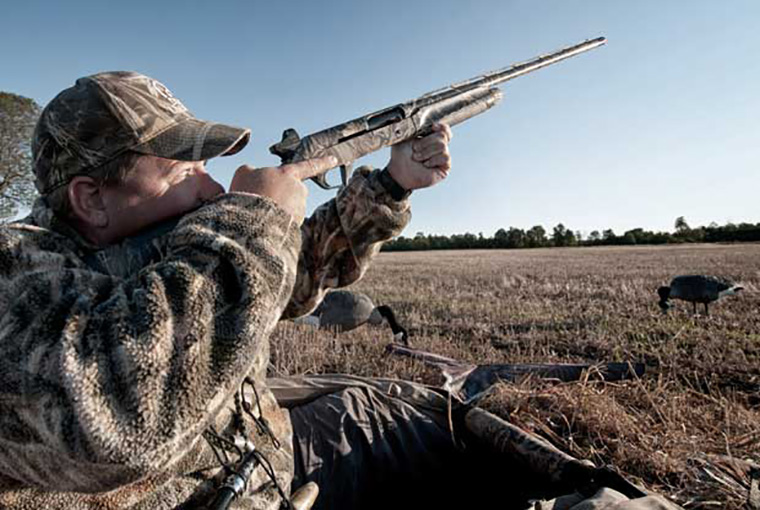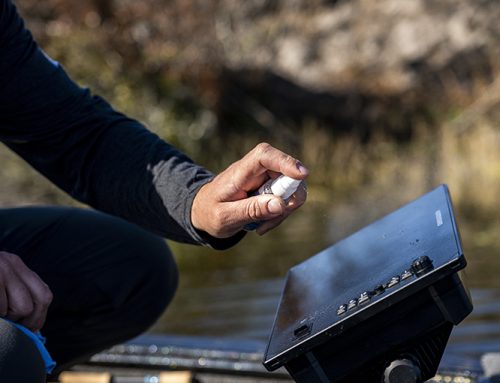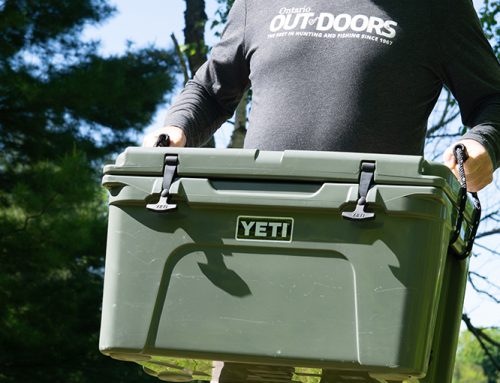
Ensuring a quick, clean kill is the goal of every hunter.
How to achieve that is the topic of much discussion and debate in gun stores, hunt camps, and gun clubs across the country. Rifle shooters argue velocity, bullet expansion, and composition, while shotgunners talk about pattern, lead vs. alternatives, larger magnums, and shot size.
When it comes to shotguns, understanding the variables in payload delivery can provide insight into the effective killing power of a particular load. The length of the shot string is one of these variables.
Simply put, shot string is the distance between the first and last pellets that arrive at a target. Or, put another way, it’s the lengthwise spread of shot when it leaves a barrel.
In a hunting situation, shot string can determine how effective the hit is on a flying target. Envision that a short shot string results in the pellets hitting the target all at once, providing more punch, while a longer shot string packs less punch, but because its time of arrival at a target is more spread out, it can provide more leeway to connect with a flying target.
Over the years, there has been much debate about the role shot string length plays in shooting. Some argue it’s irrelevant, while others assert its importance. A case can be made for both.
Two camps
Much of our understanding about shot string length is based on research by Major Gerald Burrard in the 1920s and outdoor writer Bob Brister in the 1970s. Both used long targets towed behind moving vehicles to understand the effect of shot string. With shot pellets sometimes splattering the entire 16-foot length of Brister’s target, the research sparked supposition that shot string length could assist a shooter in hitting a fast-flying target.
Shot string research also led to the conclusion that upon ignition pellets at the rear of the short string become deformed, and are consequentially less ballistically efficient and move more slowly than those in the front. It also raised the theory that packing too much shot in a shell can result in a shot string with spaces in it, resulting in possible misses.
Counter theorists maintain that shot string effect is negligible, due to the high speed of the pellets. Muzzle velocity of 1,200 feet per second converts to 818 miles per hour. When that is set against a flight speed of 40 to 50 miles per hour, it can be argued that in the fraction of a second, the distances covered by the front and back pellets of the string are inconsequential.
Much has changed since Burrard and Brister’s tests were completed. For one thing, the lead waterfowl loads they used have been largely replaced by steel. Even many believers in the effects of shot string length dismiss its importance with steel loads, as there is no pellet deformation and the strings are generally shorter. And, technology has provided new insight into ballistics in general, with high-speed cameras capturing images not previously possible.
Yet, the debate continues with the 4 major ammunition manufacturers split evenly down the middle.
Yet, the debate continues with the 4 major ammunition manufacturers split evenly down the middle.
Manufacturers weigh in
“Remington does not consider the shot string because it varies so much from one firearm to the other,” said Marie-Claude Dussault of The Gravel Agency, a Remington distributor. “They vary so much that they can not be quantified nor regularized.”
Recent shotshell innovations have focused on creating tight patterns to extend the shooting distance, particularly with turkey and waterfowl loads. Although one is a stationary target and the other amongst the fastest-moving birds shooters will come up against, the technology used in the loads is often similar.
Federal Premium doesn’t test for shot string while designing shells. Their solution to extending range is the Flite Control wad, which is designed to separate from the shot 15 to 20 feet from the muzzle. It’s used in both the company’s turkey and waterfowl loads.
“The effect shot string length has on hitting a moving target has been a question pondered by many shotgunners for years. With the recent technology advancement in high speed photography, Federal has been able to begin the understanding behind the shot string distribution curve,” said Eric Carlson, Federal Premium Shotshell Product Development Manager. “The shot string distribution curve is the measure of the position of the pellets in the shot string with relation to time. This is quantified as a percentage of the payload vs. the specified time interval.
At this point of data analysis, we have not been able to determine the effect that wad design has on the shot string distributions. Although, a recent study has shown some dependence on the gauge diameter on the shot string distribution curve. A larger bore will produce a more pronounced shot distribution curve with more pellets in the front, compared to a smaller bore like the .410, which has a much less pronounced curve and fewer pellets in the front of the string.”
Winchester, on the other hand, does take shot string length into consideration.
“There are many parameters taken into consideration in new product development,” said Steve Meyer, Winchester’s supervisor of new product development. “Different developments have a different focus. If a new shot buffering system is being implemented, like Longbeard, or a new wad design, like Blindside, there will be more attention [given] to patterns and shot string. If the proposed development is a new payload/velocity combination that uses wad designs similar to existing wads, there will be less focus on shot string.”
Winchester uses high-speed video to assess shot string length. While developing Long Beard, Winchester tested 20 feet from the muzzle to assess pattern and shot string. Testing nearer the target showed little difference in shot string length between the hex shot in Blindside and regular spherical steel shot.
Dan Banting of Kent Cartridge Canada said, “I believe Brister’s results show conclusively the impact of an elongated shot string on patterns and did it in a visible fashion that is very hard to argue against.”
But, he pointed out with steel shot the impact of long shot strings has been somewhat diminished. Banting did raise a concern about “peculiar-shaped pellets and those shells containing mixed loads of different shape, size and weight pellets.” He believes this mix elongates the shot string, and while it could result in downed waterfowl, it could also wound birds.
An independent voice
Steve Milton is both a gunsmith and a national and provincial sporting clays champion, and winning trap shooter.
“People who say it doesn’t matter don’t know what they are talking about,” he said.
Milton used a high-speed camera and found tighter chokes produce longer shot strings. He said the shorter shot string with steel shot is not due to the shot composition, but the more open choke used to shoot steel. Milton believes longer shot strings produce better patterns and can help the shooter connect with the target.
“If you overlead by just a fraction, you’re more likely to hit it,” he said. “If you underlead it, it won’t help.”
He agreed that there are a lot of variables that come into play with different shell, gun, and choke combinations. Milton’s advice to connect with your target is to spend time at the range. “The average shooter is not a good shot. They don’t spend enough time practising.”
Insight can also be gained from Patternmaster, a company known for its chokes. Its reputation was built with technology that shortens the shot string and creates more knockdown power.
The take-away
Should the average shooter be concerned about shot string length, with so many varying opinions on the subject?
One constant theme from the experts – no matter what their opinion on shot string – was combinations of shotguns, chokes and shells can affect the pattern. Spending time at the pattern board and finding a combination that works for your gun will result in more hits on clay birds and the real thing.
Practice will help you form an opinion on the role of shot string length, and as a bonus, will make you a better shot.
This article was first published in the Fall 2014 issue of Ontario OUT OF DOORS. Subscribe now.






Leave A Comment